George Town, Malaysia is truly one of the jewels of Southeast Asia. The entire beautifully preserved historical center of the city is a designated UNESCO World Heritage Site.
For generations, this port town in Penang was one of the most crucial trading centers in the region. All that international exchange resulted in a culturally, ethnically, and religiously diverse population, which has helped shape the city’s multifaceted identity.
Nowadays, George Town has an air of faded colonial grandeur, balanced by undeniable energy. Renewed interest in Penang has led to an influx of art, restaurants, and cafés, all catering to a new generation.
Although the city has changed significantly in recent years, it still retains its timeless charm. With its beguiling blend of the old and the new, not to mention spectacular food, George Town, Penang should be at the top of any traveler’s Southeast Asian bucket list.
Why Visit George Town
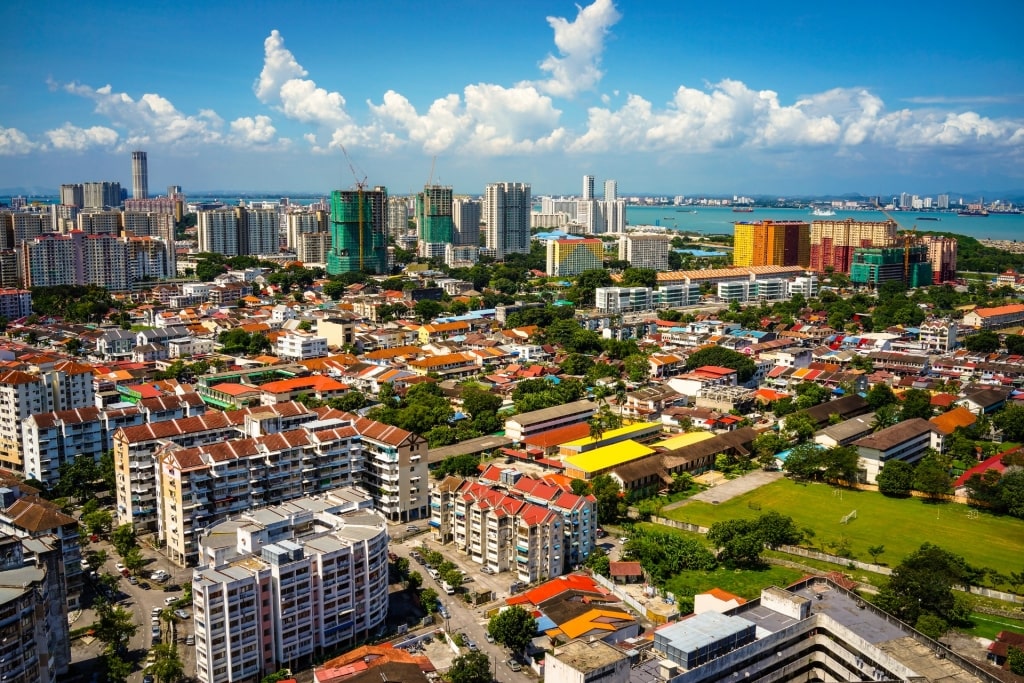
George Town
The colonial core of George Town packs an astonishing array of cultural diversity, delicious food, and striking architecture all into an approachably sized, largely walkable area.
It also happens to be one of Southeast Asia’s most photogenic cities. Picture glorious colonial buildings in an array of fading pastel hues alongside traditional Peranakan homes.
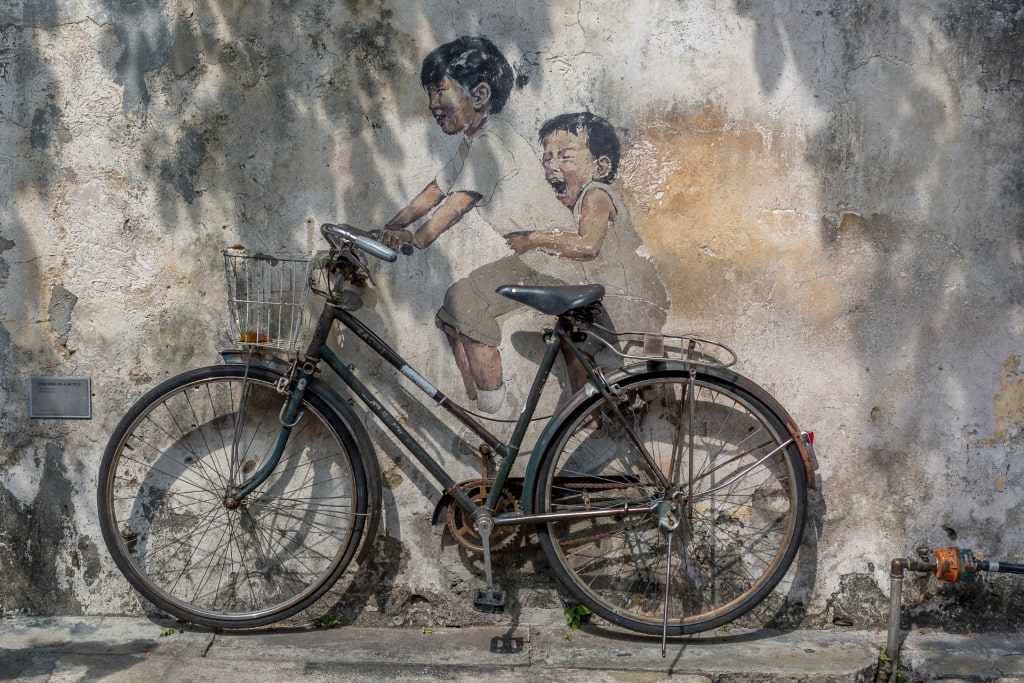
Boy on Motorbike street art
In more recent years, street artists have strategically placed murals all over town. Rather than clash with the existing architecture, these colorful works have injected new life and energy into building facades. They’re popular on Instagram and represent George Town’s ongoing revival as a cultural capital.
The influx of street art also exemplifies part of what makes George Town so special in this particular moment. It’s a shining example of a Southeast Asian city that honors its heritage, while still looking to its future.
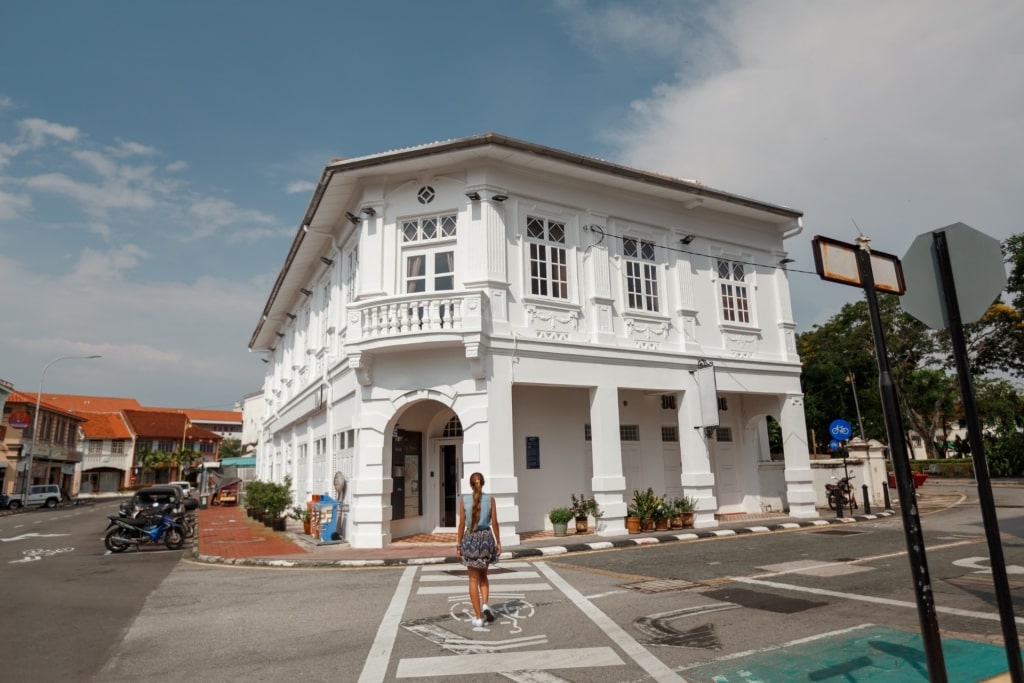
Acheen Street
While a number of cities in the region have demolished key historical neighborhoods and shophouses in the race towards modernization, George Town has largely opted for a slower, more responsible balance between development and preservation.
The result is a city that still has some of the best street food in all of Asia, along with fine dining restaurants. Expect to find art galleries and thoughtfully curated boutiques sitting alongside family-run shophouses that have been selling the same artisan crafts for generations.
History & Culture
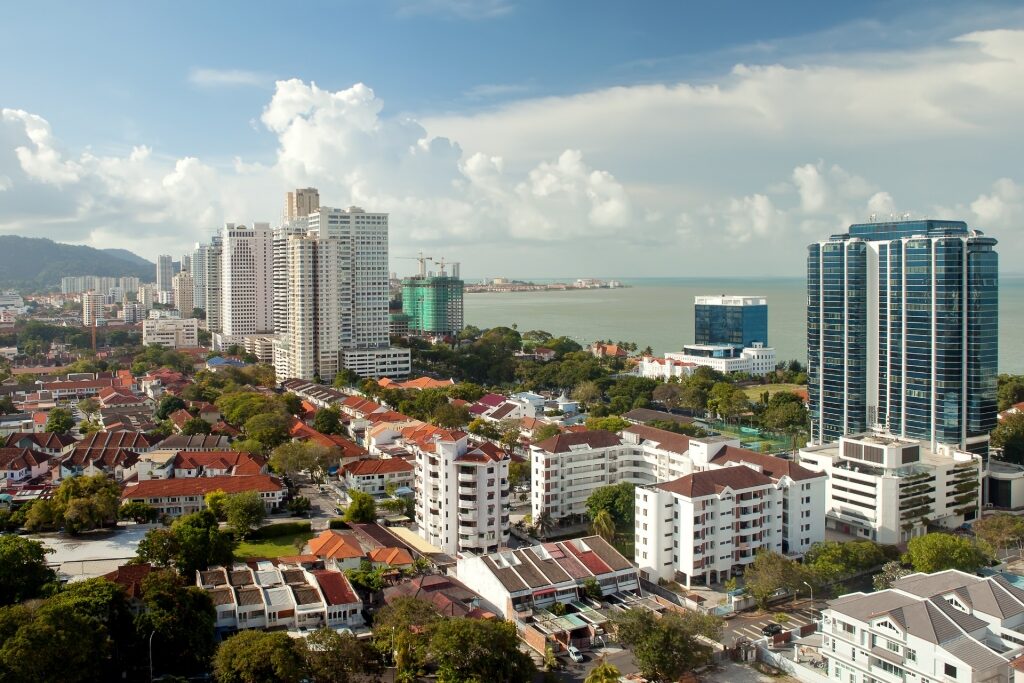
George Town
First established in 1786 by Captain Francis Light of the British East India Company, George Town quickly rose to become the primary economic and cultural hub for the island of Penang.
From the early days, George Town was designated as a free port for Dutch and Portuguese merchants in the region. When the British East India Company combined the territories of Malacca, Penang, and Singapore into the Straits Settlements, George Town became the capital for a brief period.
By the mid-1800s, all that trade and the ensuing wealth it brought had transformed George Town into a cosmopolitan port town. The diverse local population consisted mostly of Malay, Indian, Siamese, and Chinese residents, as well as a smattering of German, Armenian, British, Japanese, Javanese, Burmese, and Sinhalese.
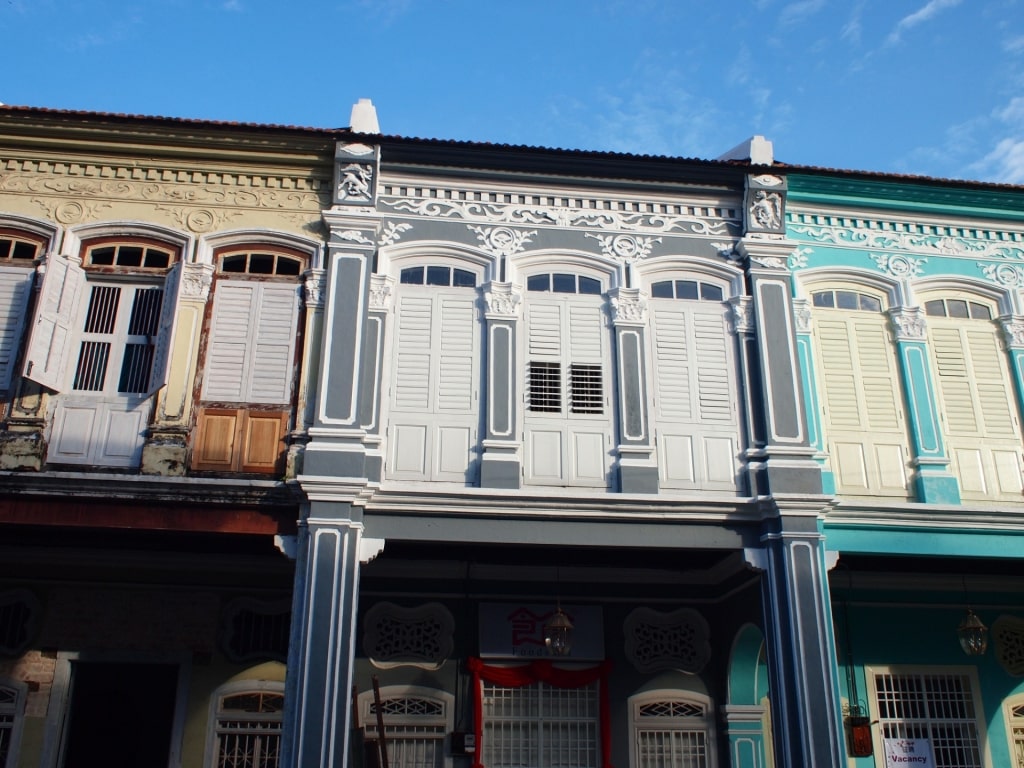
Peranakan Mansion
One group that was of particular cultural importance to George Town was the Peranakans, also sometimes known as Baba-Nyonya.
Originally from southern China, the Peranakans were highly skilled merchant traders who established themselves throughout the region from Phuket, Thailand, to Malacca, Malaysia.
Although many Peranakans are of partial Hokkien Chinese ancestry and their language contains a number of Hokkien words, the community very much has its own separate identity. Since many of the Peranakans were affluent merchants, they left an indelible mark on George Town in the form of lavishly decorated houses.
Nyonya cuisine, which incorporates spices and ingredients from all of the places along former trade routes, is a point of pride for many restaurants around Penang to this day.
Tips for Visiting George Town
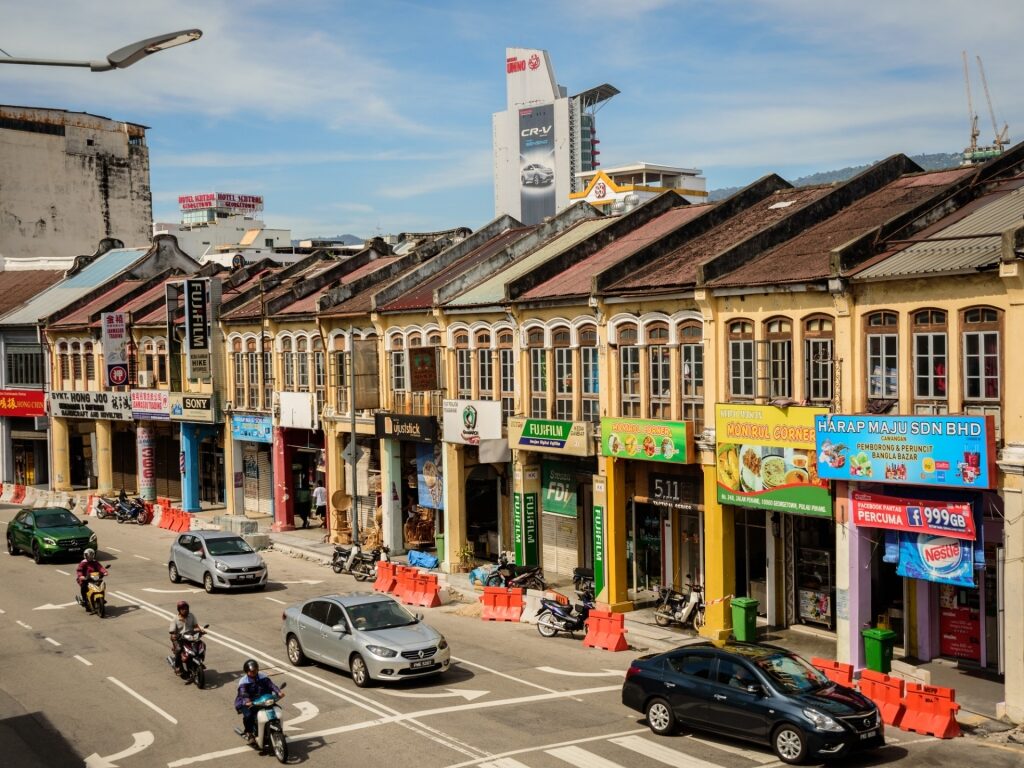
Jalan Perak Street
Navigating George Town is a breeze once you get the general lay of the land. With a population of more than 700,000, the city has a fairly wide sprawl.
Most travelers, however, opt to spend their time within the UNESCO-designated historical area of the city, which is easy to traverse on foot. Taxis are plentiful and English is widely spoken, should you need to travel longer distances.
If you plan on visiting Hindu and Buddhist temples and Islamic mosques, be sure to pack appropriately respectful clothing options. Some places of worship will offer travelers a shawl to cover bare shoulders or legs, while others may refuse entry to anyone not abiding by the dress code.
Also, as with visiting any religious institution, be mindful of the fact that these are active places of worship.
Things to Do & Attractions in George Town, Penang
Visit Kek Lok Si Temple
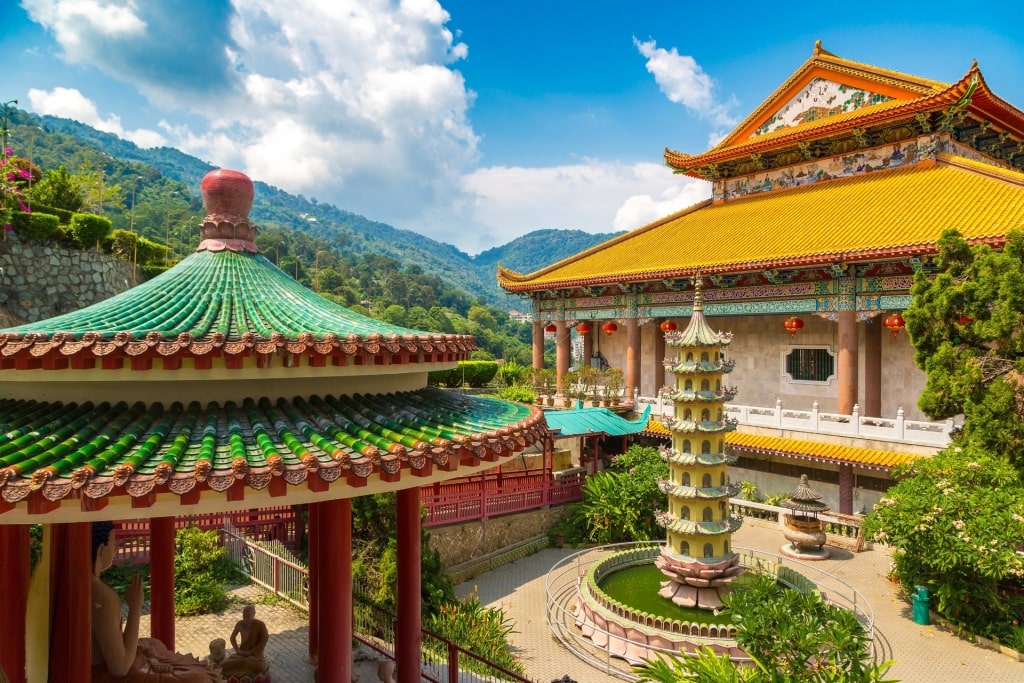
Kek Lok Si Temple
Sometimes referred to as the Temple of Ten Thousand Buddhas, this series of pagodas dating back to 1891 is by far one of the most impressive Buddhist shrines in Malaysia. It’s worth setting aside at least an hour or two to explore all of the hallways and gardens here.
At the center of the complex is a seven-story pagoda dedicated to King Rama VI of Thailand. As the name promises, there are indeed many, many renditions of the Buddha here, mostly made of alabaster and gleaming bronze.
Explore Little India
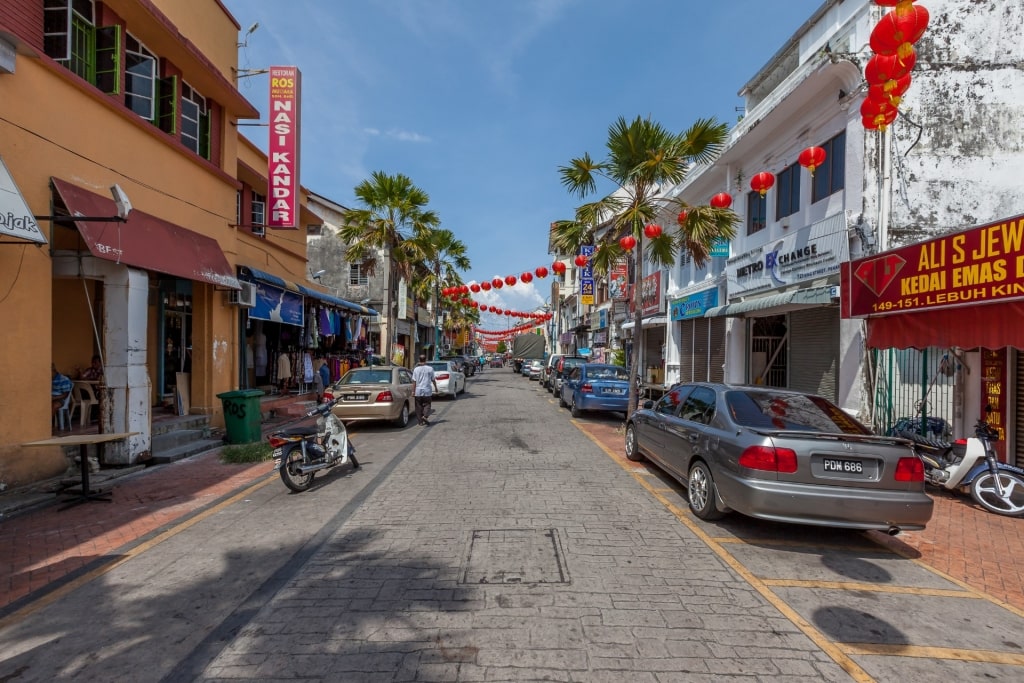
Little India
The vibrant enclave of Little India only encompasses a few blocks but feels like a different world from the rest of George Town. Bollywood hits blast from every street corner and brilliantly hued saris glitter from the shops lining Lebuh Pasar, or “market street”.
It’s a terrific place to shop for spices, gold jewelry, or simply soak in the ambiance. Sri Maha Mariamman Temple, the oldest Hindu shrine in Penang, and Nagore Dargha Sheriff, a Muslim shrine, form two of the central pillars of the neighborhood.
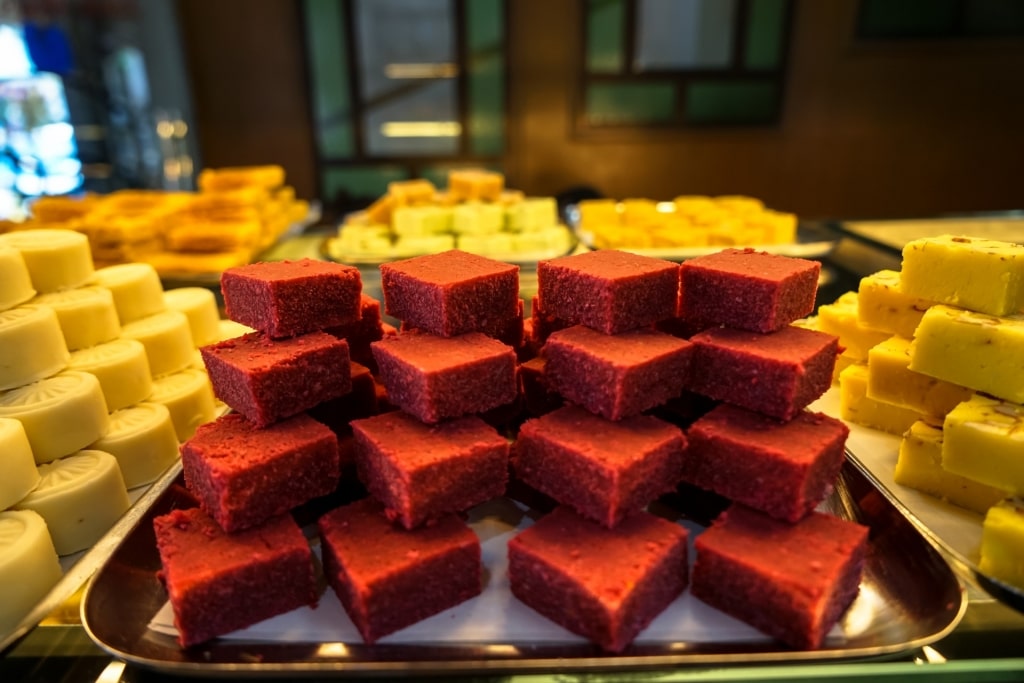
Little India
As with everywhere else in George Town, Penang, food is central to Little India. This is the place to go for flaky samosas, brick-red tandoori chicken, crisp masala dosas, and all sorts of sweets loaded with ghee and jaggery sugar.
One of the best ways to explore this neighborhood is simply to follow your nose. Many of the street vendors and shops have been here for decades, if not more, and it’s worth trying as many things as you can manage.
In particular, look out for vendors selling roti benggali, a fluffy bread with an airy crumb, burnished crust, and a handsomely domed top. Contrary to what the name might imply, these loaves aren’t from Bengal, India, but rather from right here in Penang.
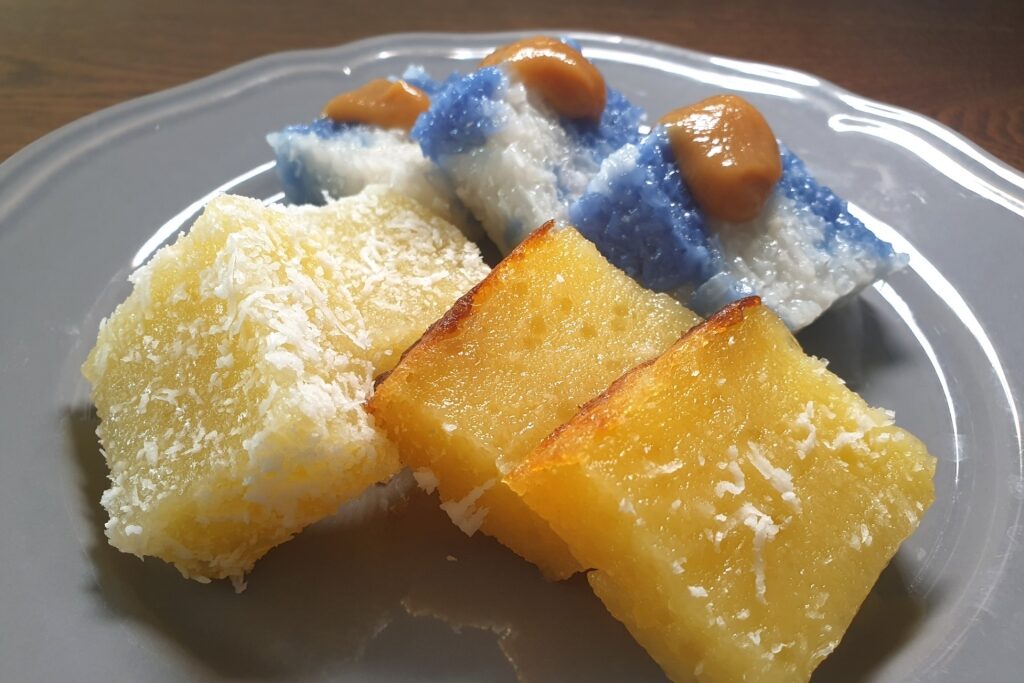
Kaya
Locals eat them slathered with margarine and kaya, a fragrant jam made of sweetened condensed milk infused with pandan, a fragrant tropical plant. Since few bakeries still carry on the humble tradition of baking roti benggali, those that do are practically revered.
Visit a Traditional Peranakan Mansion
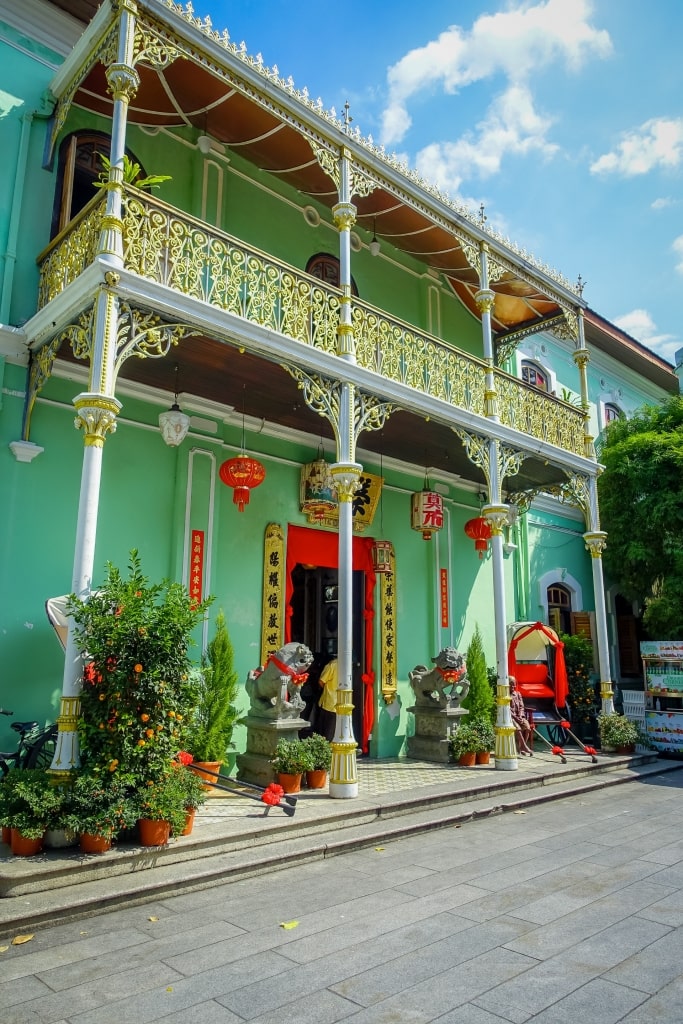
Peranakan Mansion
Understanding the enduring legacy of the Peranakans is essential to understanding Penang. At Pinang Peranakan Mansion, visitors can get a glimpse of what life was once like for a well-to-do Baba-Nyonya family.
Over the last century, the mansion fell into a state of dilapidation. Dedicated preservationists worked for years to restore it to its former luster. Today, more than 1,000 antiques, all meticulously restored or in top condition, line these shelves and hallways.
Think ornate Peranakan silver jewelry, original teakwood furnishings, and decorative blackwood chests inlaid with mother-of-pearl designs.
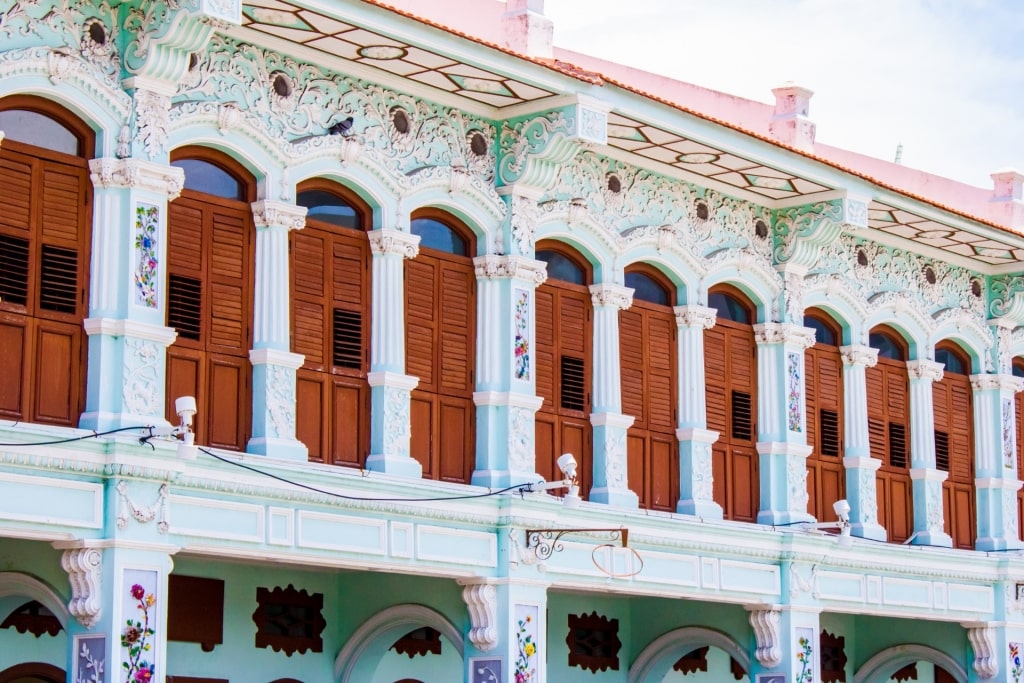
Peranakan Mansion
One of the most fascinating aspects of the mansion is that it exemplifies the cross-cultural pollination of its era. The house itself is an amalgamation of Eastern and Western styles, all of which combine to impressive effect.
The intricately carved wooden screens have Chinese roots, while the main staircase, which features elaborate cast-iron balusters decorated with fleur-de-lis, was wrought in Glasgow, Scotland.
In order to fully appreciate the mansion and the stories it contains, be sure to book a tour online in advance.
Discover a Floating Temple
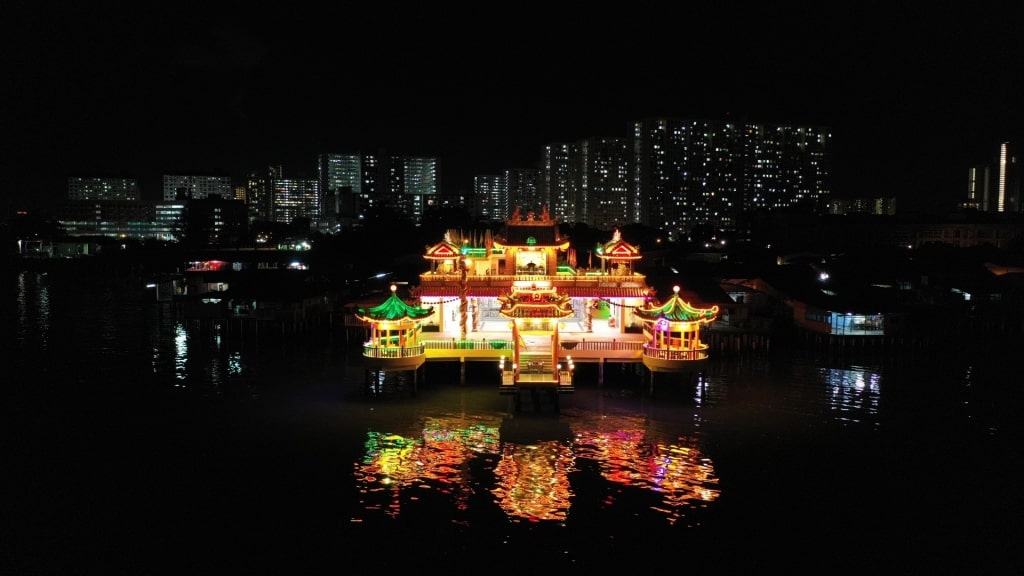
Hean Boo Thean Kuan Yin Temple
First built in 1972 and then structurally enhanced in 2012, Hean Boo Thean Kuan Yin Temple is a more recent addition to the city than most of Penang’s religious sites. The temple itself is set on stilts overlooking the water, earning it the nickname of the “floating” temple.
It’s most stunning in the evening, when colorful light illuminates the pagoda rooftops, but it’s also worth seeing during the daytime hours. While a bit of a detour, the temple is only roughly a 25-minute taxi ride from downtown George Town.
Wander the Lush Botanical Gardens
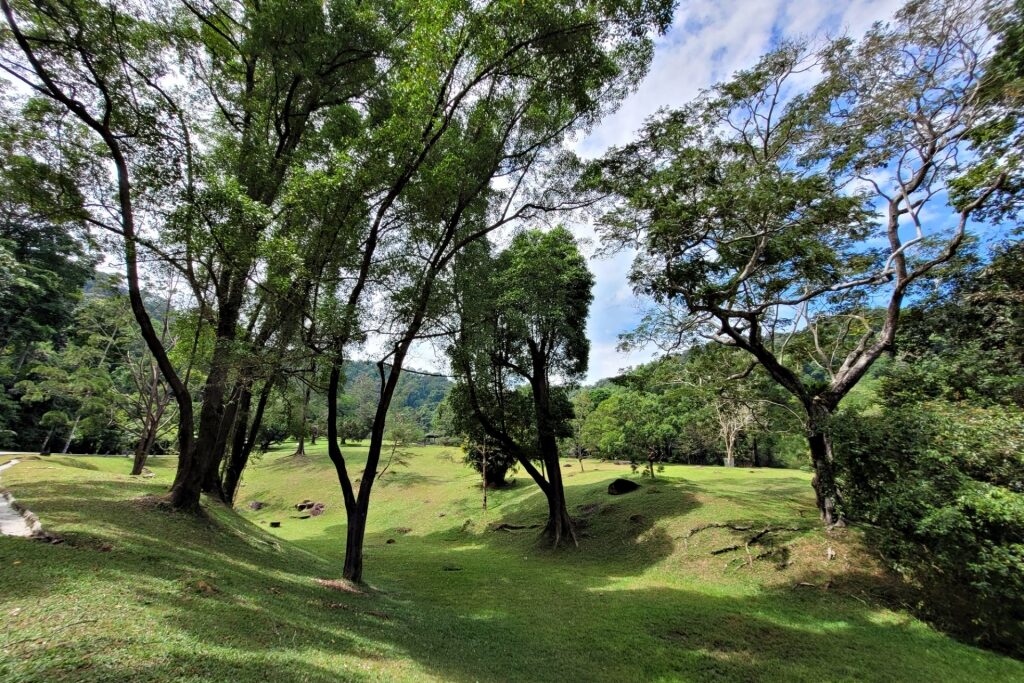
Penang Botanical Gardens
For a walk on the wild side, the verdant Penang Botanical Gardens at the foot of Penang Hill are more than worth the 10-minute taxi ride from the center of George Town. Since 1884, this dense jungle interwoven with walkways has served as a green escape for locals in the city.
Watch out for mischievous monkeys—most are harmless but have a penchant for stealing travelers’ snacks and cameras.
Food & Drink
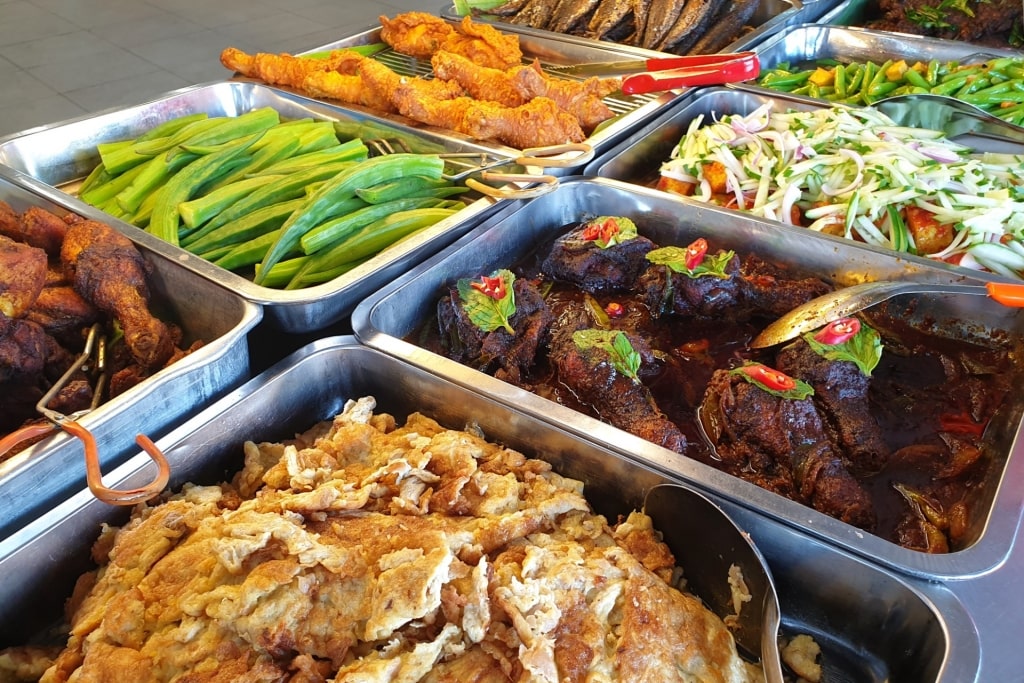
Penang food
The dining options alone would be reason enough to pay George Town a visit. Locals in Penang live to eat and are fiercely proud of their street food.
Hawkers here are a delicious representation of the island’s diversity. Indian, Malay, and Chinese communities all have a strong presence in these stalls and shophouse restaurants.
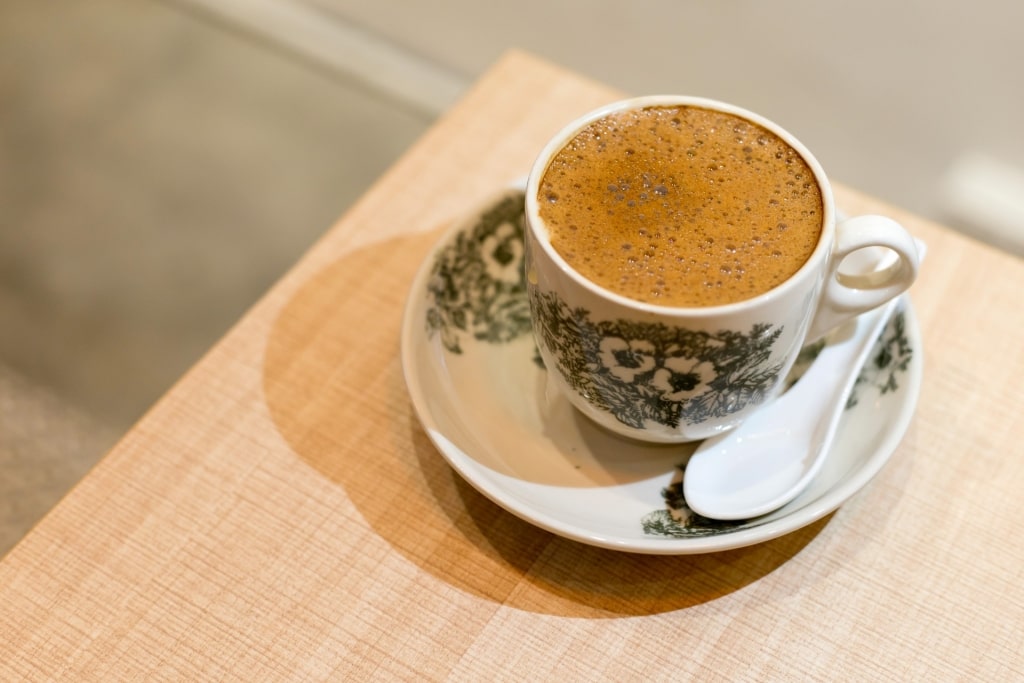
Penang coffee
Café culture is an essential part of life in Penang and the best way to start your day here is at a traditional kopitiam, or coffee shop.
Order a traditional “white” coffee, made with creamer and instant coffee powder, or a “pulled” tea, which obtains its rich, frothy mouthfeel from being tossed back and forth between two cups.
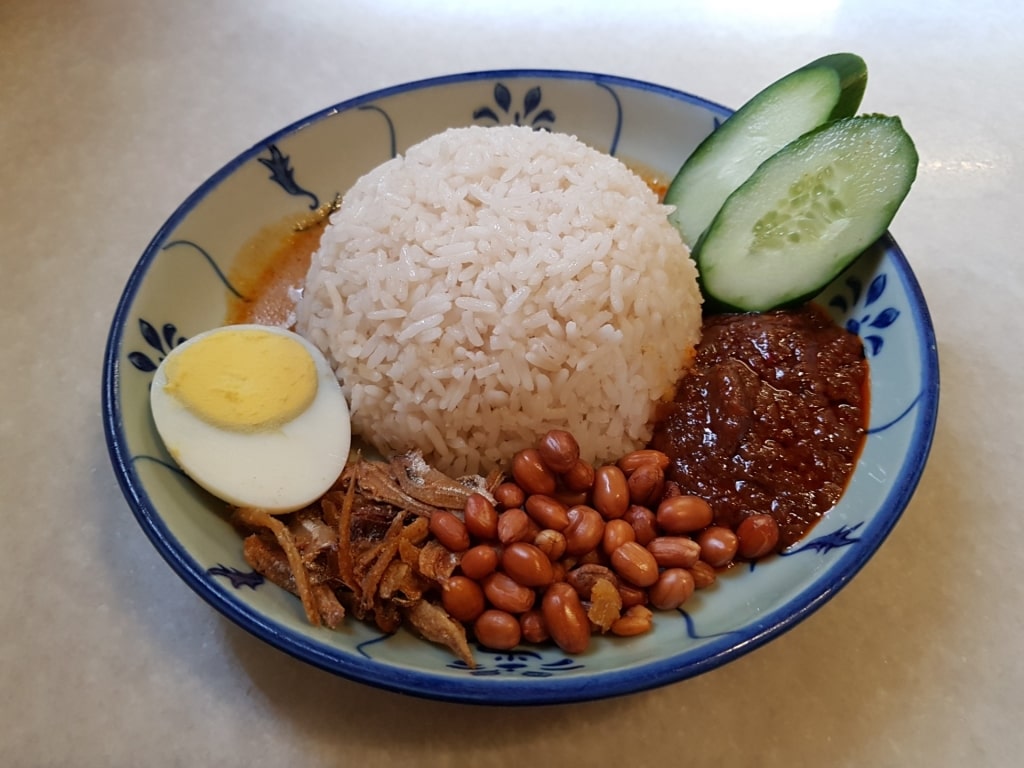
Nasi lemak
A thick slice of toast with kaya, a sweet jam, is the perfect accompaniment. If you’d prefer something on the savory side, order nasi lemak, a classic rice dish garnished with spicy sambal, a hard-boiled egg, and an array of accompaniments.
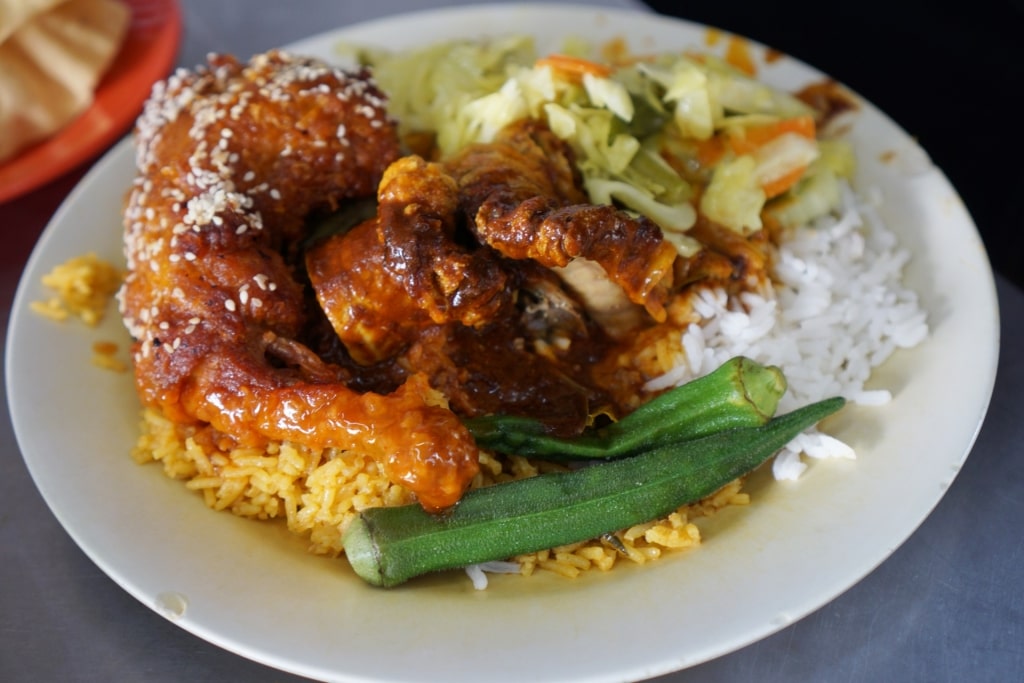
Nasi kandar
Since eating is effectively a ceaseless, full-day affair here, it’s never too early to start contemplating your next meal. While the options are numerous, it’s hard to beat the humble working person’s lunch of nasi kandar both for value and variety.
The term essentially denotes rice topped with various curries. Although the dishes here have Indian roots, the curries in Penang have a distinctly Malay accent to them.
Simply order a plate and point to everything that strikes your fancy. Curries with lamb, goat, and other meats tend to be seen as more luxurious than vegetarian dishes, while options like massive prawns or seafood are more premium still.
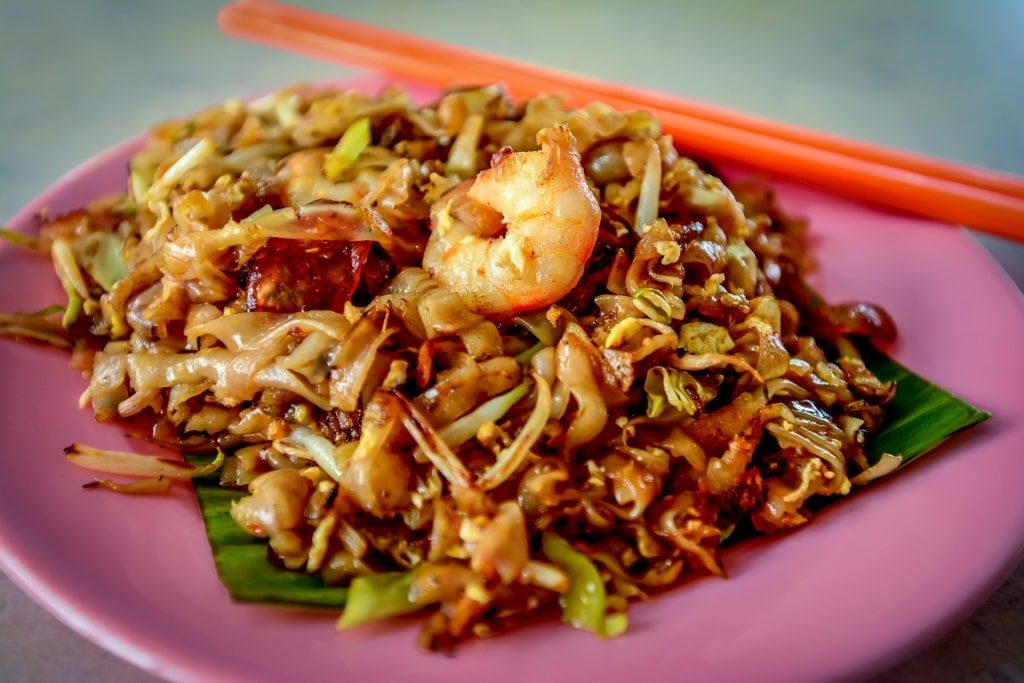
Char kway teow
Another dish in Penang to keep an eye out for is char kway teow, made of toothsome rice noodles with Chinese sausage, prawns, cockles, beansprouts, and chives, all lapped by a sweet-savory sauce spiked with chili jam.
Every vendor has their own recipe and creativity is very much encouraged. A high-end restaurant might enhance the dish with crab meat, giant prawns, or other premium seafood, while some hawkers will throw in fish cakes or squid.
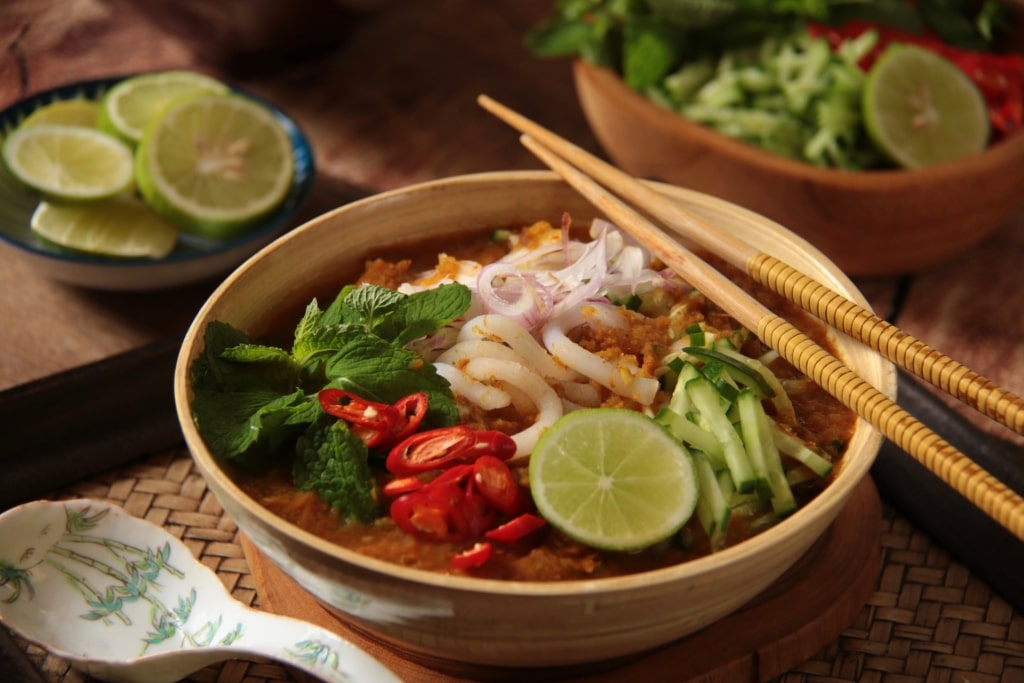
Char kway teow
Another essential is asam laksa, a bowl of rice noodles in a lusciously creamy coconut broth. Order Hokkien mee with fat, head-on prawns swimming in a rich broth over noodles and you’ll never be disappointed.
Finally, oh chien, or oyster omelet, is nothing short of addictive. Studded with fresh oysters, this egg-and-tapioca-flour pancake gets its crisp-chewy texture from a brush with searingly high heat and liquid lard.
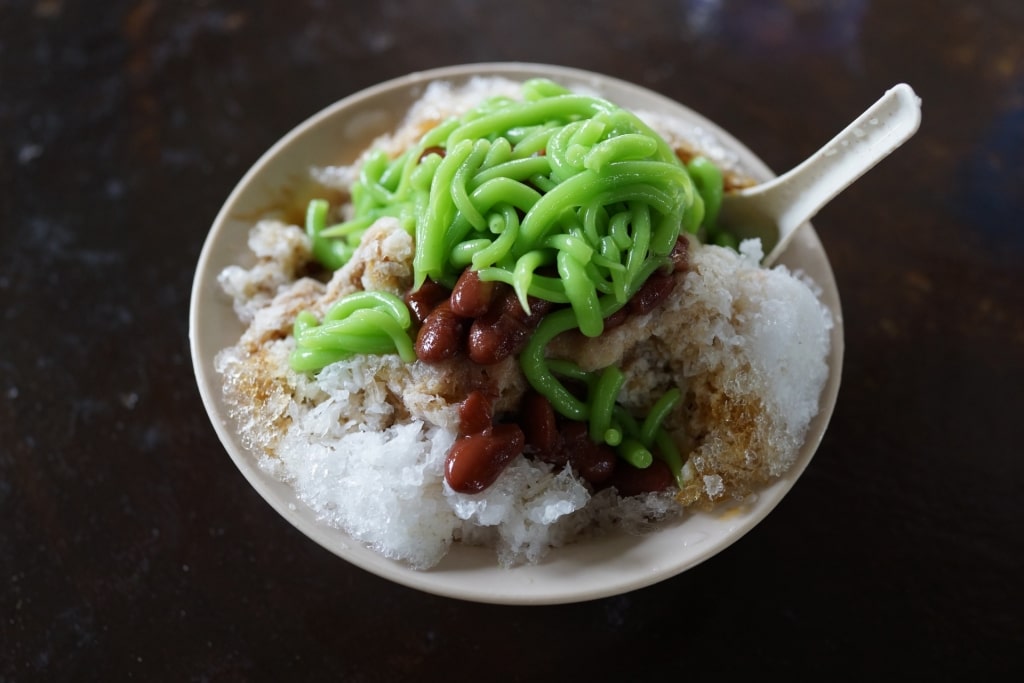
Cendol
To help beat the afternoon heat, be sure to seek out rojak, a salad of chopped, crunchy mixed fruits topped with crushed peanuts, raw sugar, and a tart dressing, or cendol, vivid green, pandan-scented noodles in a sweet coconut soup.
Best Time to Visit George Town, Penang
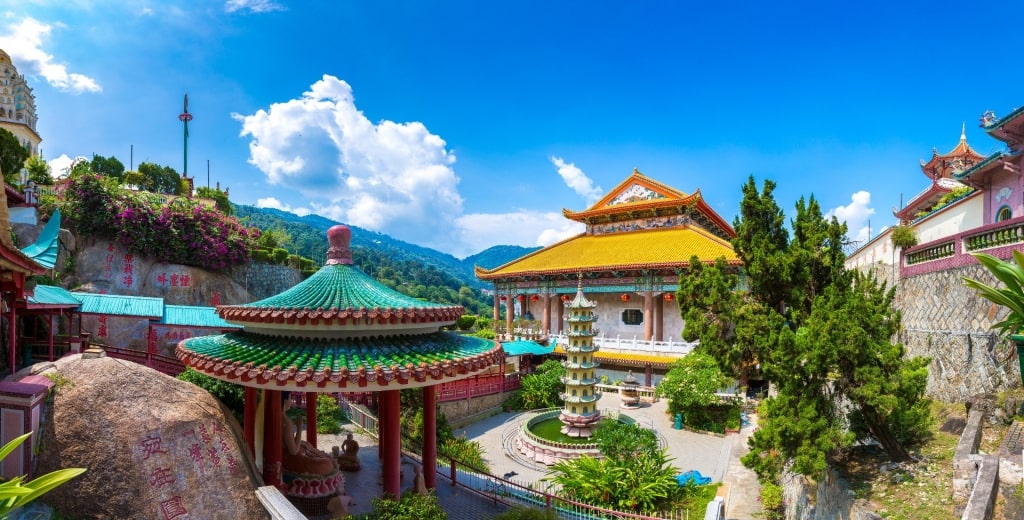
Kek Lok Si Temple
The period between November and late January is by far the best time of year to visit George Town. During this time, days in Penang are consistently pleasant, with plenty of sunshine and temperatures that never soar too high.
November does see some rainstorms, but these tend to be brief affairs—the perfect length of time to sit with a coffee and watch the world go by, before returning to the streets.
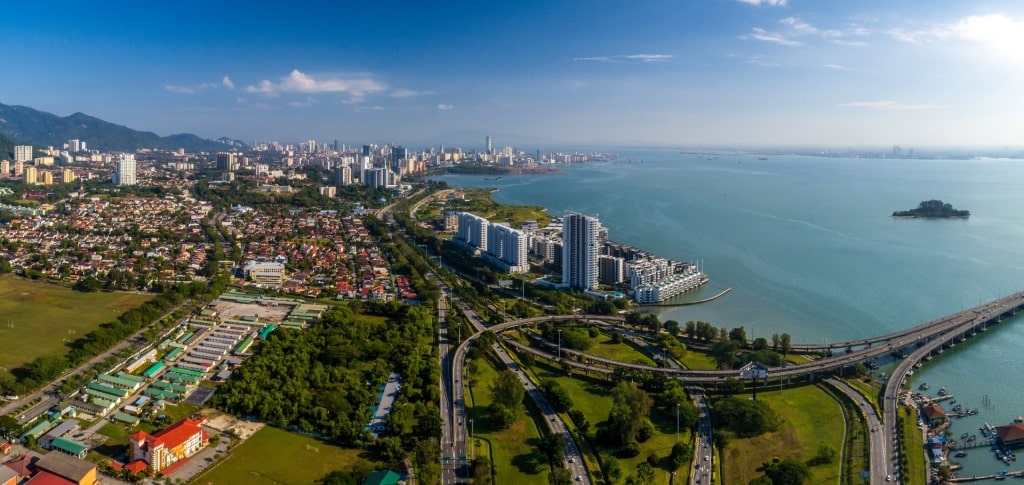
George Town
George Town has always, in essence, been a port town, and the best way to experience it and the rest of Penang is by ship. Browse through our Penang cruises and plan your next voyage today.



